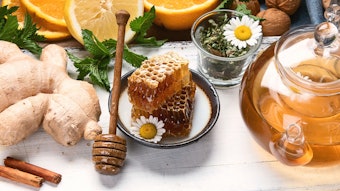
Flavor perceptions—or flavor “objects” (ex: banana)— result from the binding of taste, somatosensation and olfaction. This binding results from a complex time line of sensory interactions that evolve throughout the food/beverage consumption process. Insights into these interactions can be applied by flavor formulators to achieve a range of enhancing and suppressing effects. During a presentation at the Society of Flavor Chemists’ (SFC) winter meeting in Philadelphia, Paul Wise, associate member at the Monell Chemical Senses Center, discussed the ways in which taste and odor interactions can be leveraged to modulate overall flavor impressions.a The binding of sensory perceptions is not is not fusion, Wise stressed, because it is more than the sum of its parts. An illustration of this binding effect is the boosting of sucrose sweetness perception via the presence of fruity ester odorants. Conversely, if peanut odorants are combined with sucrose, no enhancement is witnessed. As a result, Wise explained, odor-taste congruency can be seen as crucial in sensory binding. This emphasis on odor-taste congruency is known in the sensory sciences as “what fires together wires together,” according to Wise. Harmonious sensations are readily associated; as a result, qualitatively similar taste-odor components can act as a predictive tool: if something smells sweet, it will “taste” sweet. In some cases, odor-taste pairings will trigger specific neurons in tandem.










